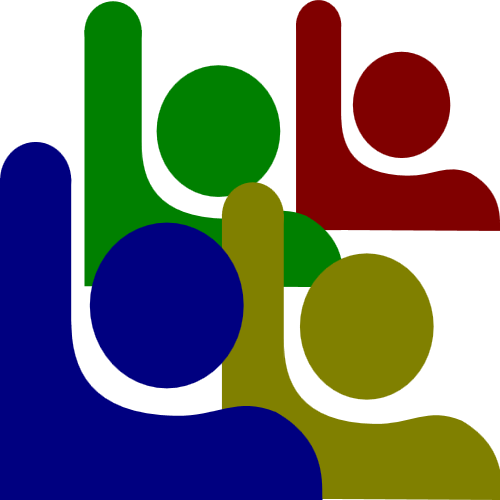Internet has become so pervasive in today’s life especially among the youth that the dichotomy between connected and disconnected is fading away. How does this affect the youth and the future course of social change movements? David Sasaki surveys the internet assisted activism in the recent past to help us understand the technology led power shifts towards the young.
The majority of people in the world are under the age of 30, and more than a quarter of the world’s population is under 15. As they enter adulthood they will take for granted their ability to connect to the internet at any time. In fact, the dichotomy between “connected” and “disconnected” will likely fade into history. It should not surprise us that today’s youth activists are using internet tools to provoke social change. The mutually dependent relationship between technology and activism has a long, complicated history.
Antislave trade activists took advantage of the invention of the printing press. E.D. Morel and his supporters in Congo Free State depended on the newly released one-click Kodak Brownie camera to expose the gruesome violence of Belgian forced labour in Africa. The Women’s Suffrage movement made use of the newly invented international postage stamp to create the world’s first global rights movement, which also led to international support against foot-binding in China and widow-burning in India. In other words, young activists have always adopted new technologies to push for social progress.An informal survey of internet-assisted activism over the past few years suggests a rudimentary taxonomy of approaches:
Anti-power: First and foremost, we can expect to see the continuation of anti-power protests that demand for the resignation of the political class without offering any concrete proposals for what should replace it. Young activists are not yet willing to suggest a return to the socialist forms of governance that have slowed growth in countries like Vietnam, Cuba, Laos, and Nepal. But they also realise that current forms of democratic governance tend to favour the already wealthy and powerful. Recent data from the World Bank suggests that global economic inequality is higher than had been previously estimated, and that inequality continues to grow along with youth unemployment. Until these trends begin to reverse, we can expect global youth to demand the resignation of those responsible for the policies that disadvantage them.
As we have seen in the cases of Egypt and Spain, however, such movements could lead to an endless cycle of protest, rather than the implementation of real social change.
Hacktivism: When MasterCard, Visa, Amazon, Paypal, Swiss Postal Finance, and others refused to process donations to Wikileaks following the release of secret US diplomatic cables, a loose network of activists calling themselves ‘Anonymous’ launched Operation Payback, an attack on the companies’ servers which rendered them inaccessible for up to an entire day.
Wikileaks itself exemplifies the spirit of hacktivism, using technology to threaten the privileged position of the powerful through the use of radical transparency. In the past month alone the hacktivist groups Anonymous and Lulzsec have attacked several government websites in Brazil, Chile, and Venezuela. In Peru a group calling itself ‘Piratas de la Red’ hacked into a Peruvian police database and published the names of special force police officers. The Mexican chapter of Anonymous even gained access to the database of the Federal Elections Institute just one day before crucial elections  in Mexico State. Some commentators, like Evgeny Morozov, claim that denial of service (DDoS) attacks are a legit form of civil disobedience while others, like Benjamin Greenberg, say such attacks are an affront to free speech. While most media coverage of hacktivism focuses on attacks against the servers of governments and major corporations, human rights organisations are also frequently affected.
in Mexico State. Some commentators, like Evgeny Morozov, claim that denial of service (DDoS) attacks are a legit form of civil disobedience while others, like Benjamin Greenberg, say such attacks are an affront to free speech. While most media coverage of hacktivism focuses on attacks against the servers of governments and major corporations, human rights organisations are also frequently affected.
Public policy advocacy: Many, perhaps most youth activists are drawn to anti-power forms of protest, but others focus their time on reforming public policy. In Mexico, for example, activists were able to repeal a federal tax increase on internet access by launching the #InternetNecesario campaign, which drew massive online participation, led to a debate with members of congress, and the tax’s eventual repeal. Such campaigns can also target the policies of corporations.
 In 2010 Greenpeace launched an effective campaign to pressure Nestlé to stop using palm oil from plantations that are linked to deforestation. Over the past few years ‘new media advocacy’ has transformed from its grassroots beginnings to become an entire industry of consultants who explain to NGOs how to use social media to increase donations, build up mailing lists, and influence politicians. As such activism formalises into institutions, however, it also tends to drive young people away.
In 2010 Greenpeace launched an effective campaign to pressure Nestlé to stop using palm oil from plantations that are linked to deforestation. Over the past few years ‘new media advocacy’ has transformed from its grassroots beginnings to become an entire industry of consultants who explain to NGOs how to use social media to increase donations, build up mailing lists, and influence politicians. As such activism formalises into institutions, however, it also tends to drive young people away.
Open data: Another movement that aims for reform rather than overthrow is the Open Data community, which calls on governments to provide its citizens with access to raw data that can be analysed, visualized and re-used in applications. For years groups like Sunlight Foundation and Open Knowledge Foundation have promoted the use of Open Data in the US and UK respectively, but they are now joined by the likes of Garage Lab in Argentina, Open Data Mexico, Fundación Ciudadano Inteligente in Chile, the World Wide Web Foundation in Ghana, Janaagraha in India, Afrographique in South Africa, and SODNET in Kenya.
 These organisations are young and tech savvy. They believe that greater access and use of government information will lead to greater accountability and more civic participation.
These organisations are young and tech savvy. They believe that greater access and use of government information will lead to greater accountability and more civic participation.
Public constituency: A common criticism of internet-assisted activism is that it only empowers groups that have access to computers, smart phones, and internet connections; in other words, the middle and upper classes. It is for this reason that we should not be surprised that internet users in Mexico carried out a successful campaign against a federal tax on internet access. But, unsurprisingly, we have yet to observe any online campaigns for access to potable water in rural villages. A truly representative democracy requires a representative public constituency, where the voices of all citizens are heard; not just the urban elites. Groups like Rising Voices and Digital Democracy work with under-represented communities to educate them on the use of online tools to increase civic presence and engagement. Similar projects work around the world at the local level – including in many public libraries – but they tend to attract a smaller share of participation from youth activists.
Autonomy: Finally, we see a segment of youth activists that seem to care little about either reforming or overthrowing the government. They use social networks and technology to improve their own communities without any government involvement at all. Residents of Guadalajara and Mexico City grew tired of city governments that ignored their pleas for bike lanes and pedestrian crosswalks. They formed an online community that meets offline once a week to paint a new bike lane or crosswalk in a zone identified as dangerous for pedestrians and cyclists. They have even printed out “wiki-tickets” to place on vehicles parked on sidewalks and crosswalks. In China the 1KG project (short for “one more kilogram in your backpack”) encourages urban youth to take school books with them on their travels to rural China. They have distributed textbooks to over 1,000 rural schools without any government involvement. The “guerilla gardening” movement aims to make effective use of municipal land that has been ignored by the government and absentee property owners. Activists in Taiwan, for example, regularly reclaim neglected areas of Taipei to create community gardens with a strong focus on herbal medicine and acupuncture. It is doubtful that we will see a return to the kind of “turn on, tune in, drop out” activism of the 1960s, which led to experiments in communal, offthe- grid living, but it would not be surprising to see a reactionary movement that emphasises autonomy and local community.
These six approaches to internet-assisted activism should not be seen as exclusive and contradictory, but rather overlapping and complementary. Many of the same young activists who paint guerilla crosswalks on Saturday afternoon are also lobbying congress on Tuesday and visualising government data on Thursday. In 1968 images of youth raising their fists in angry defiance splashed across television screens and created the world’s first global social catharsis.
The protests of that year now seem minor compared to what has taken place so far in 2011, led by the first generation of youth to grow up with computers. Still, it remains to be seen what, if anything, we will achieve with our growing networks of activists as we face economic inequality, youth unemployment, food shortages, and climate change. Some, like Michel Bauwens, see “the start of a process towards deep transformation of our civilization and political economy” while others predict much more of the same political infighting and government secrecy. What young activists have already shown is that there is agency in their activities. They have already overthrown dictators, repealed unjust laws, and called the world’s attention to stories that the mainstream media were too willing to ignore. As George Landow once remarked, “technology always confers power to someone. It gives power to those who possess it, those who can use it, those who have access to it”. A slightly simplistic interpretation is that technology confers power to young people. What we will do with that power will be for future historians to contemplate.
This is an excerpt from an essay on “THE YOUTH-LED REVOLUTIONS OF 1968 AND 2011” written by David Sasaki from the book “Digital (Alter)Natives with a Cause”? Book 3, To Act. Published 2011 by the Centre for Internet and Society, Bangalore, India and Hivos Knowledge Programme, The Hague, The Netherlands. For references and more reading you can download the book from http://cis-india.org/digital-natives/blog/digital-natives-with-a-cause-a-report









Really Nice article